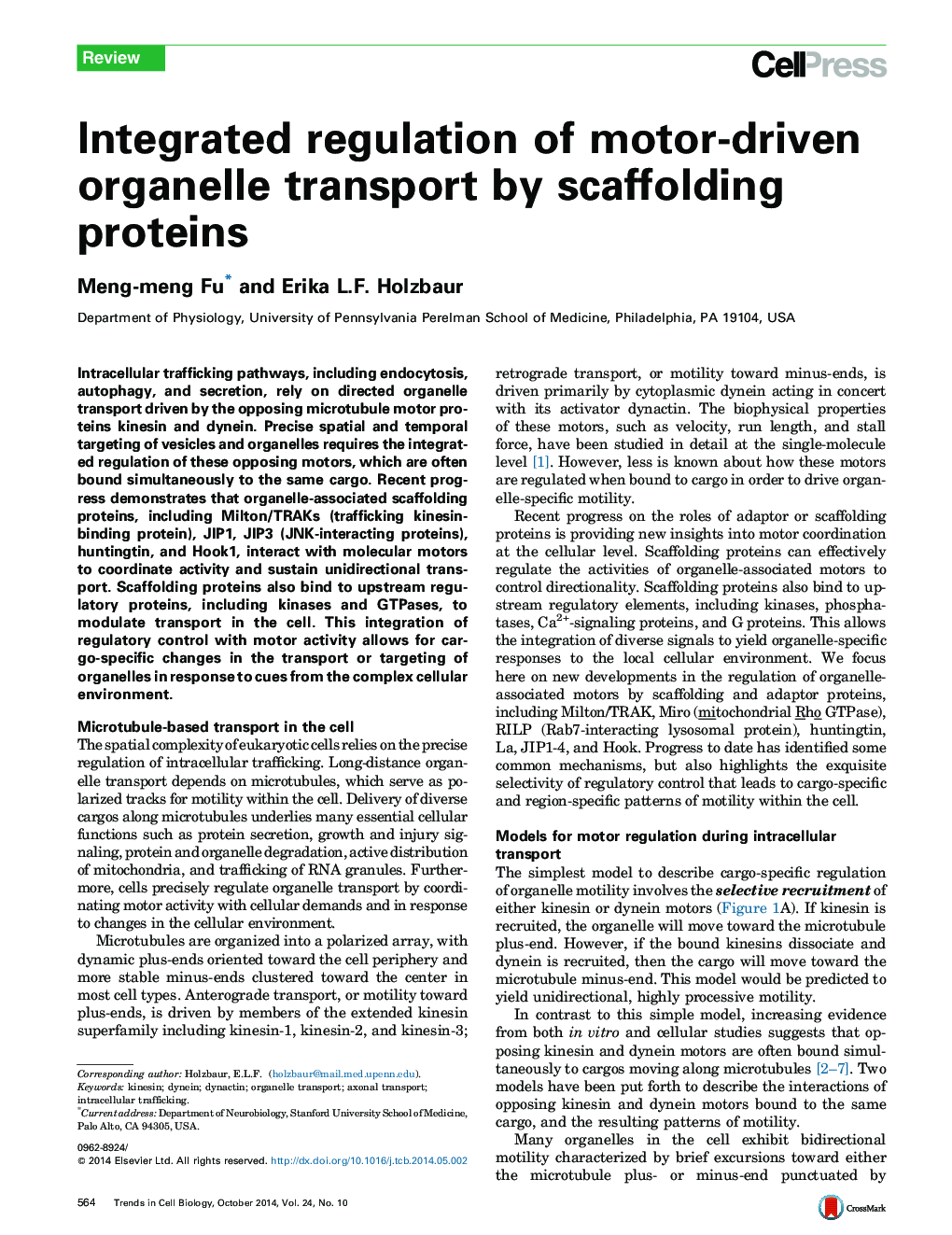| Article ID | Journal | Published Year | Pages | File Type |
|---|---|---|---|---|
| 2204407 | Trends in Cell Biology | 2014 | 11 Pages |
•Organelle-bound scaffolding proteins regulate opposing kinesin and dynein motors.•Scaffolding proteins also bind to upstream regulatory kinases and G proteins.•Scaffolding proteins integrate signaling with coordinated control of motor activity.•These modules allow sustained transport and rapid responses to the local environment.
Intracellular trafficking pathways, including endocytosis, autophagy, and secretion, rely on directed organelle transport driven by the opposing microtubule motor proteins kinesin and dynein. Precise spatial and temporal targeting of vesicles and organelles requires the integrated regulation of these opposing motors, which are often bound simultaneously to the same cargo. Recent progress demonstrates that organelle-associated scaffolding proteins, including Milton/TRAKs (trafficking kinesin-binding protein), JIP1, JIP3 (JNK-interacting proteins), huntingtin, and Hook1, interact with molecular motors to coordinate activity and sustain unidirectional transport. Scaffolding proteins also bind to upstream regulatory proteins, including kinases and GTPases, to modulate transport in the cell. This integration of regulatory control with motor activity allows for cargo-specific changes in the transport or targeting of organelles in response to cues from the complex cellular environment.
